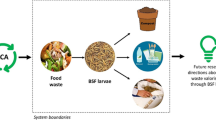Abstract
Most sludge has historically been disposed of in landfills and by ocean dumping but, because of its heavy metal content, this will be totally banned in Korea starting in 2012, based on the London Dumping Convention. Therefore, treatment and disposal methods that are environmentally friendlily are urgently required. The recycling of sewage sludge is a good treatment method for solving sludge problems in an environmentally friendly way. In this study, physical and environmental tests were conducted to evaluate the feasibility of using the by-products of thermal hydrolysis of sewage sludge as barrier layer materials in the final cover systems for landfills. In addition, testing methods for freezing-thawing (KS F 2332) and wetting-drying (KS F 2330) cycles were conducted to assess the effects of cold and hot soil climates starting from pavement. These tests yielded positive results for alternative materials for the barrier layer in a final cover system for a landfill.
Similar content being viewed by others

References
Benson CH, Othman MA (1993) Hydraulic and mechanical characteristics of a compacted municipal solid waste compost. Waste Manag Res 11:127–142
Chamberlain E, Iskandar I, Hunsiker S (1990) Effect of freeze-thaw on the permeability and macrostructure of soils. In: Proceedings of the International Symposium on Frozen Soil Impacts on Agricultural, Range, and Forest Lands. US Army Cold Regions Research and Engineering Laboratory, Hanover, NH, pp 145–155
Corser P, Cranston M (1991) Observations on long-term performance of composite clay liners and covers. In: Proceedings on Geosynthetic Design and Performance. Vancouver Geotechnical Society, Vancouver
Jeong JH, Lee JY (2008) A feasibility study of the cover materials in landfill using the by-products of thermal hydrolysis. Waste Recy Manag Res 13:(1)1–3
Lee JY (1994) Performance of landfill cover systems in cold climates. PhD dissertation, Deptartment of Civil Engineering, Wayne State University, Detroit, MI
Lue-Hing C, Zens DR, Kuchenrither R (1992) Municipal sewage sludge management: processing, utilization and disposal. Technomic, Lancaster
Anonymous (2002) Standard specification for soil. Annual Book of Korean Industrial Standards. Korean Agency for Technology and Standards, Korea
Ministry of Environment Republic of Korea (2007) Standard method for the examination of solid waste. The Ministry, Seoul
U.S. Environmental Protection Agency (1990) National sewage sludge survey, Federal Register 40CFR Parts 503, Part III, No.218. USEPA, Washington, DC
Ministry of Environment Republic of Korea (2007) Waste Management Act of Korea. The Ministry, Seoul
U.S. Environmental Protection Agency (1993) Use of alternative materials for daily cover at municipal solid waste landfill. USEPA, Washington, DC
Author information
Authors and Affiliations
Corresponding author
Additional information
The first two authors contributed equally to this work
Rights and permissions
About this article
Cite this article
Jeong, JH., Oh, BT. & Lee, JY. A feasibility study of thermal hydrolysis by-products as barrier layer materials in the final cover system for a landfill. J Mater Cycles Waste Manag 11, 208–213 (2009). https://doi.org/10.1007/s10163-009-0250-8
Received:
Accepted:
Published:
Issue Date:
DOI: https://doi.org/10.1007/s10163-009-0250-8



